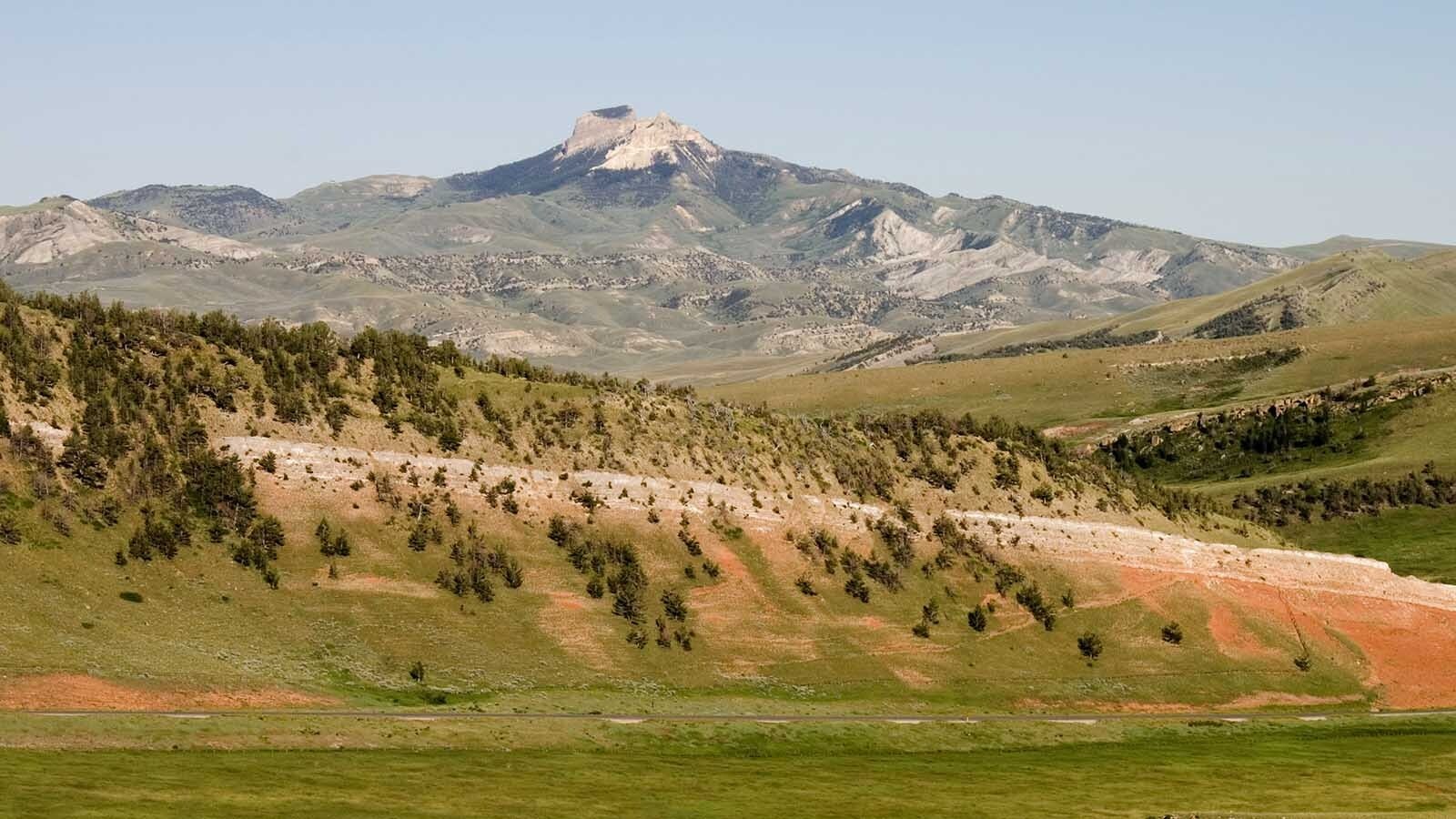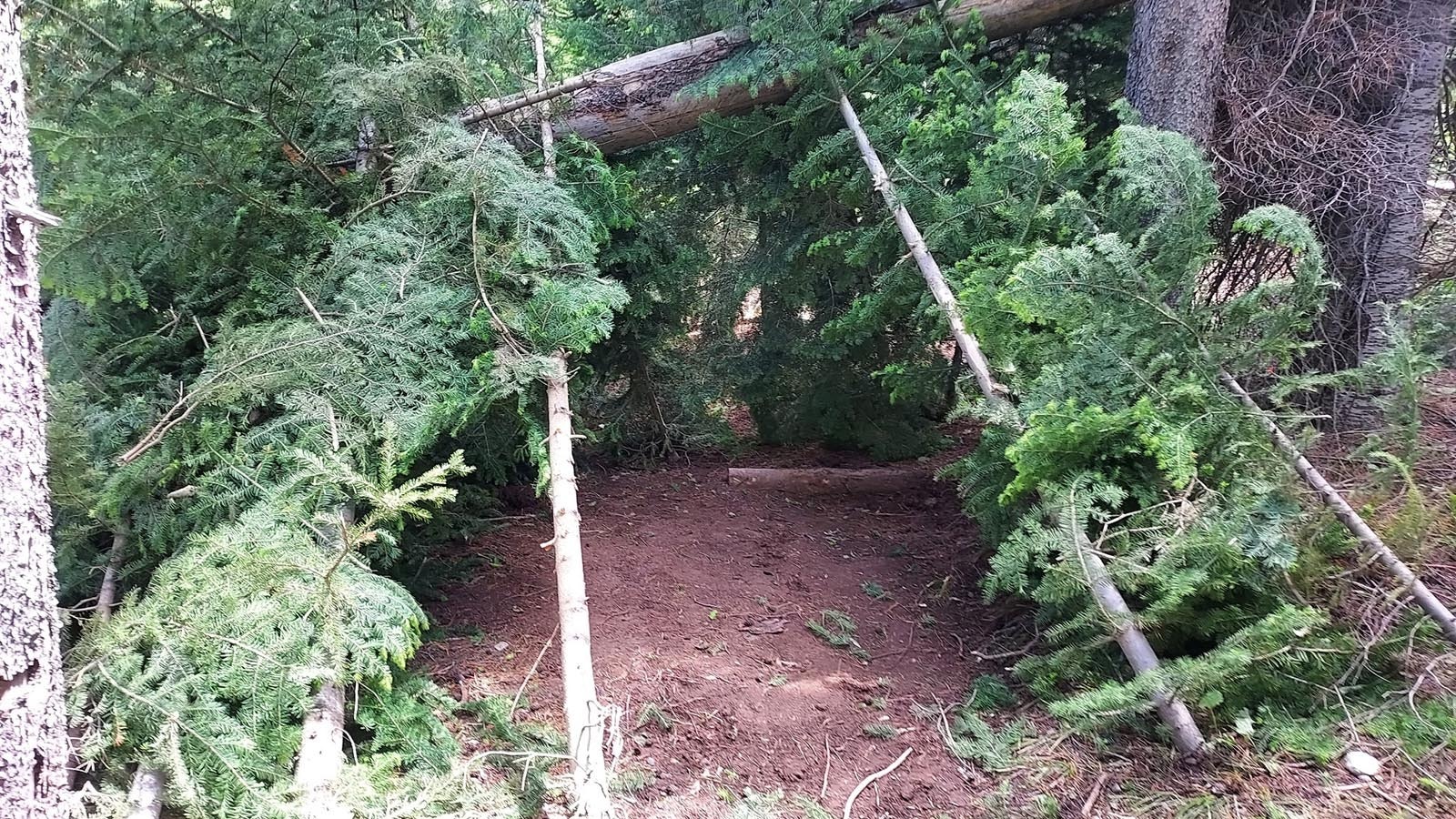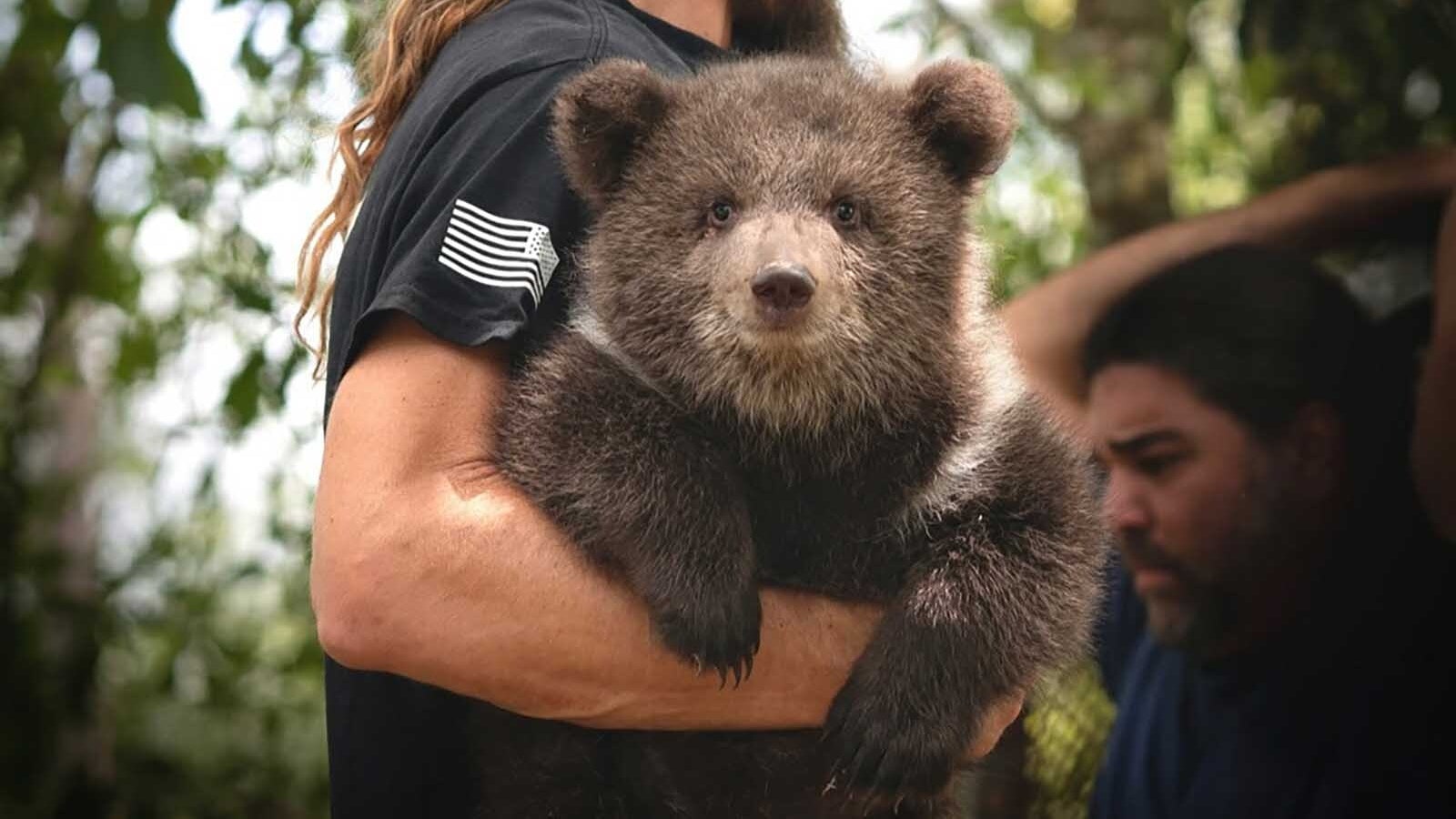When wolves were first reintroduced to Yellowstone National Park in the mid-1990s, there were about 20,000 elk in the park’s northern herd. Now there are roughly 8,000.
Meanwhile, the opposite has happened with bison in the area with their numbers ballooning from about 500 to roughly 4,460.
And accordingly, wolves have started to eat more bison. They frequently scavenge carcasses, but also sometimes are daring enough to hunt the huge, lumbering beasts.
A wolf pack’s recent takedown of a lone bull bison along the banks of Yellowstone’s Firehole River caused a huge stir. But scenes such as that have been becoming more common for several years, National Park Service wildlife biologist Dan Stahler told Cowboy State Daily.
“Any wolf packs that are in the park, if they have bison in their territory, they will prey on bison,” he said.
And it hasn’t been easy work for the wolves.
“Wolves are persistent,” Stahler said. A bison kill “is usually a long-lasting event, just because it’s so difficult, and it’s dangerous. We’ve documented wolves getting killed hunting bison over the years.”
More bison has also meant more bison dying of other causes, so wolves, being the opportunists that they are, will feast on carcasses when they can and hunt live bison when the must, Stahler said.
He’s worked in Yellowstone since 1997 and is the park’s primary large carnivore biologist.
‘A Lot Of Mythology About Wolves’
It’s a common assumption that wolves were solely responsible for the decline of Yellowstone’s northern elk herd, Stahler said, adding that it’s more complex than that.
Elk have been the primary prey of wolves for most of the wolves’ latest tenure in Yellowstone, but the northern elk herd shrank for a variety of reasons.
Wolf predation is part of the story. But mountain lions, grizzly bears and black bears also have taken their share of elk. Bears prey on elk calves in particular, Stahler said.
And humans have done their part too. Montana offered a late-season cow elk hunt for the northern Yellowstone herd from 1976-2009, Stahler said.
“There’s a lot of mythology about wolves and their supposed killing prowess,” he said.
In reality, wolves have about only a 10% to 15% success rate when they hunt adult elk, he said.
“It’s difficult for wolves to kill elk. And it’s even more difficult for them to kill bison,” Stahler said.
The bison numbers have been increasing because of a variety of factors. Effective bison management and conservation programs have helped, he said. There’s also plentiful forage for bison in Yellowstone, and they tend to have a high reproductive rate.
In addition to the estimated 4,460 bison in the northern Yellowstone, there are roughly 1,360 in the park’s interior.
It’s estimated that 10,000-20,000 elk, in seven herds, spend the summer in Yellowstone, and around 4,000 winter there, according to the National Park Service.
Meanwhile, wolves aren’t the only predators switching from elk to other fare.
“Mountain lions are killing more deer than they used to,” Stahler said. “They used to feed primarily on elk. That backs off the predation pressure on elk. That’s why we think we still have a healthy elk population here.”
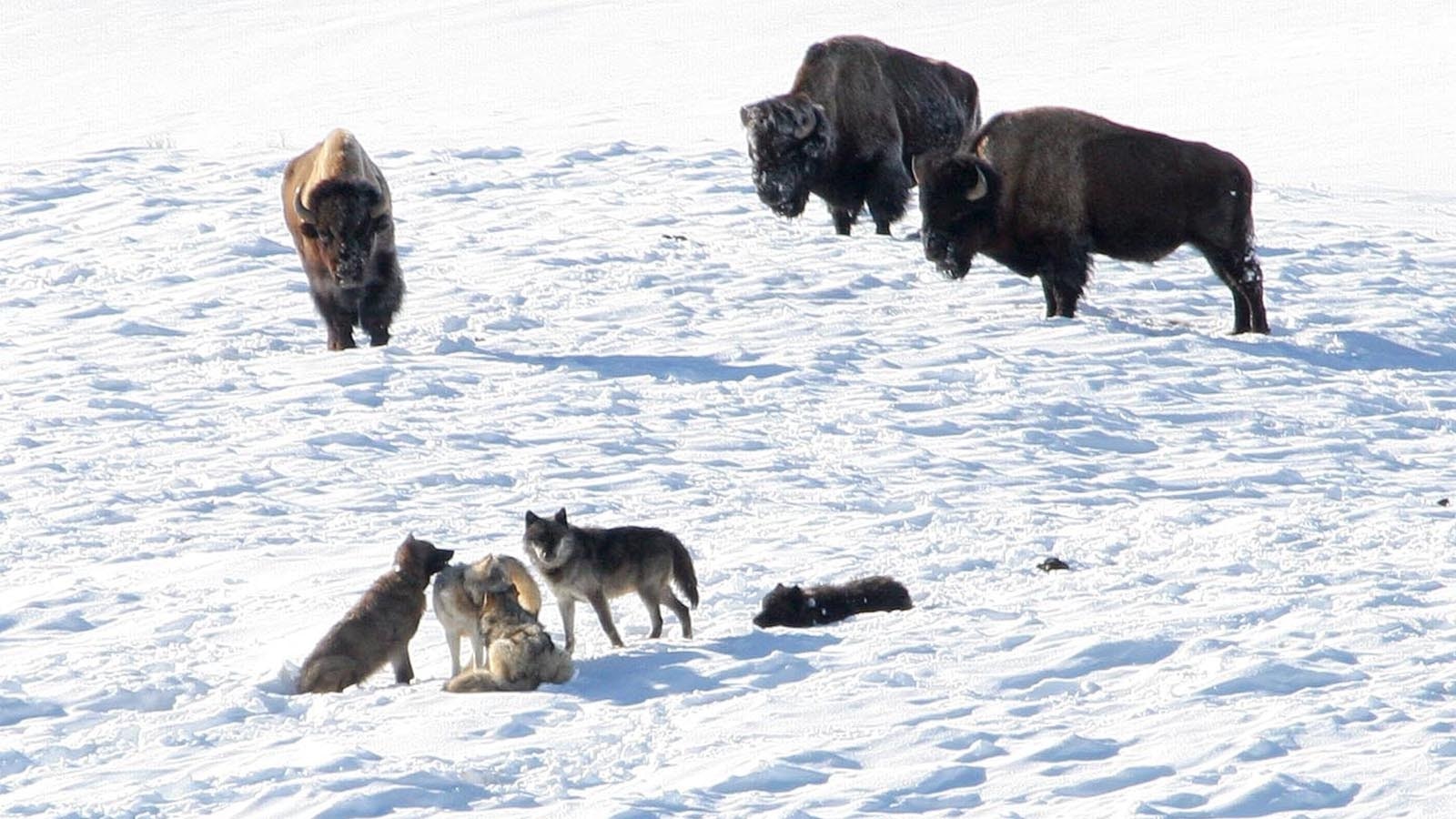
Different Tactics For Different Prey
For wolves, hunting elk and hunting bison require different approaches.
Wolves are “coursing” predators. Meaning that they prefer to get their prey to run so that they can “sift through” the herd and pick out animals that have some sort of weakness, Stahler said.
Cow elk in the prime of life – about ages 2-12 years – are essentially untouchable by wolves, he said.
Wolves tend to go for calves or juvenile elk. And they might also go after bull elk that spent themselves in battles during the rut, or elk mating season, which takes place in late summer and early fall.
Bull elk can get into brutal, pitched battles with each other during the rut, which will leave them weakened and sometimes injured.
And although elk will sometimes “bunch up and stand their ground,” they’re more likely to scatter and flee, which plays into wolves’ hunting tactics.
Smaller packs can effectively hunt elk, Stahler said.
“To take down an elk usually takes about four adult wolves. Beyond that for wolves, it doesn’t matter much and there seems to be a lot of freeloading and extra wolves,” he said.
With bison, the best success rate comes with packs of 9-13 wolves, he said.
And unlike elk, bison are far more likely to form protective bunches with their weaker members in the middle.
“It’s a like a game of chess,” Stahler said.
Wolves will probe and test the bison herd. Sometimes they’ll bed down near the bison for hours, observing and trying to figure out a way to goad the bison into running.
“Female wolves can be fleeter of foot,” which makes them handy in elk hunts, Stahler said.
Larger male wolves are good at the grunt work, gabbing on to a prey animal and pulling it down.
Yellowstone wolves are as huge as they’re sometimes imagined to be, he added. For mature wolves – at least a year and half old – the average weights are about 114 pounds for males and 96 pounds for females.
Over 28 years of research, teams have captured and weighed only about 15 Yellowstone wolves that topped 130 pounds,” Stahler said.
What Happened On The Firehole?
Stahler said he doesn’t know all the details of the bison bull takedown on the Firehole River, but it seemed typical of wolves’ bison hunting tactics.
The wolves probably caught the bull alone or in only a small group with other bulls, he said. That’s because bull bison tend to separate from the main herds this time of year.
The bull might have been previously injured or had some other signs of weakness that the wolves picked upon.
At some points during the long standoff, the bison stood in the river, which is a typical trick that some prey animals use to try escaping death, he said.
“Elk and bison will try to take a stand in the water” when cornered by wolves, Stahler said.
Many photos of the event show the bleeding bison bedded down in the snow, with the wolves bedded around him in a circle.
Again, that’s a typical tactic of trying to wait a large animal out, with some wolves occasionally going in for a quick strike to further weaken the prey.
“It’s raw, it’s wild and it’s not always clean,” Stahler said. “When wolves hunt, all they have is their mouths and their buddies.”
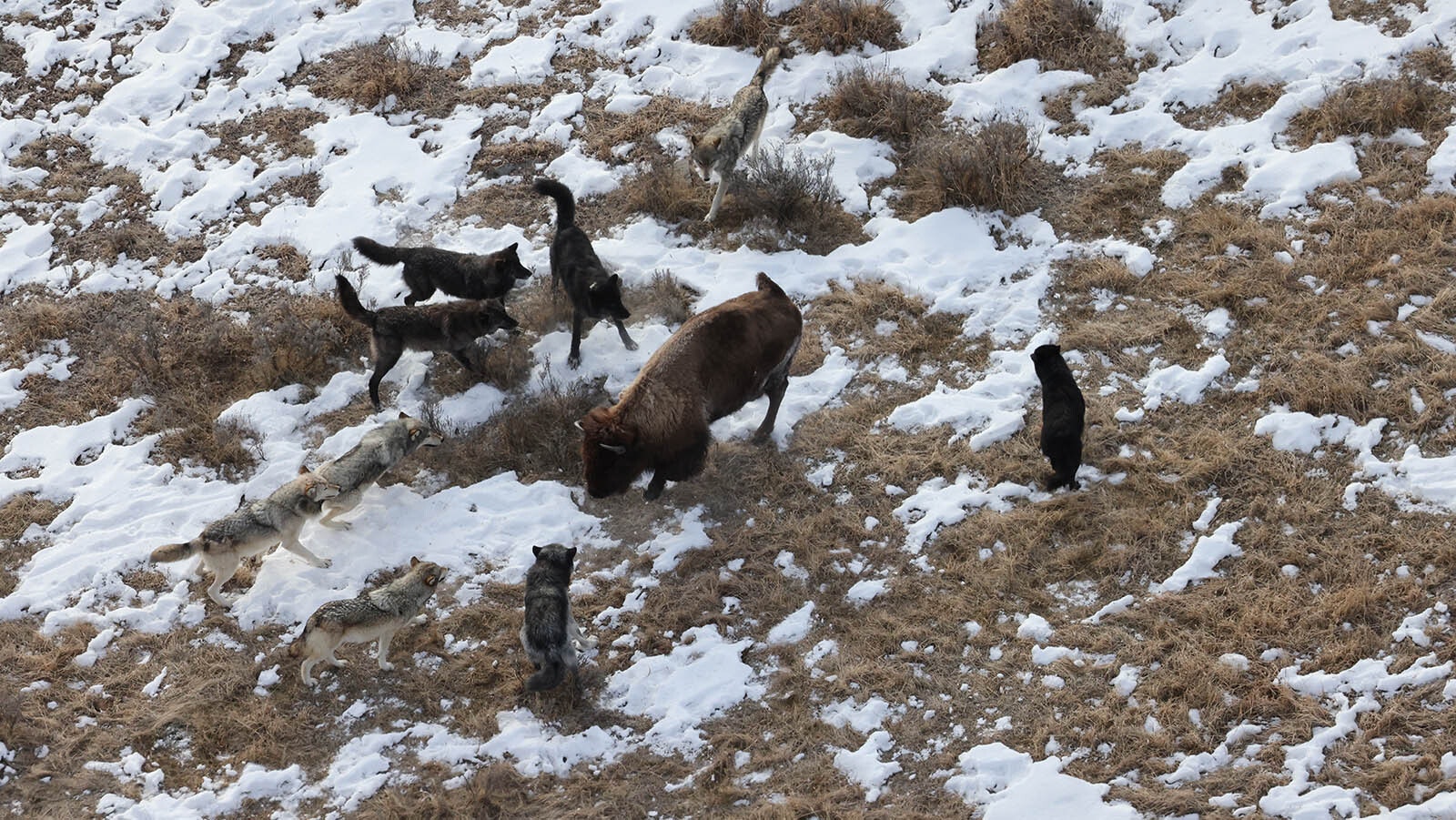
Mark Heinz can be reached at mark@cowboystatedaily.com.


